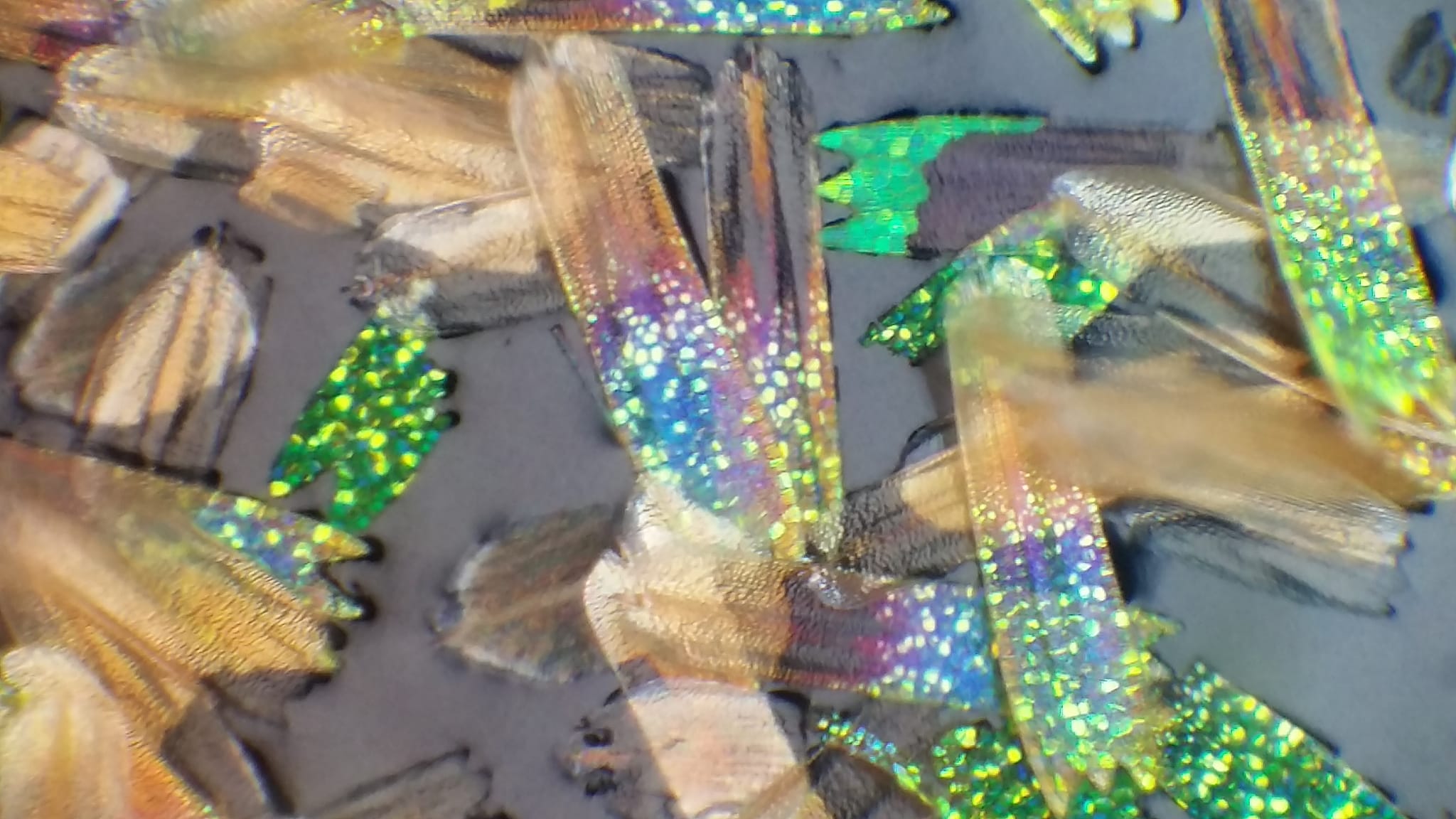BIO/MATERIALS OPTICS

From the iridescent wings of butterflies …
… to the shimmering exoskeletons of beetles, nature’s canvas is filled with colours that inspire awe and raise scientific curiosity. In our lab, we share the passion for understanding the mechanisms behind the brilliance of nature’s colours, and for innovative exploration towards developing new, nature-inspired polymer materials that might move the boundaries of material science.
Most living organisms use chemical pigments to achieve their colours, and many additionally use photonic structures to further manipulate light. Physical colouration is present in virtually all living groups, including bacteria, fungi, and plants. Many animals use physical colouration to produce either cryptic patterns or dazzling displays. The glorified examples among the latter include birds, beetles, and butterflies. While many colouration principles have been found during intensive exploration during the last few decennia, any museum specimen drawer likely harbours a critter with another yet undiscovered trick, or a hack of a well-known colouration trick. These discoveries can be both interesting themselves, and might as well be soon turned into a useful material that could be used by humanity.
The journey of our lab is one of curiosity and deep appreciation of the vibrant tapestry of colours exhibited by the living world. Join us as we continue to explore the vibrancy of the nature’s colouration tricks and help innovating towards a bright and colourful future.
PhD positions are available in the group and we like to host BSc/MSc works, please contact bodo._ICWwilts3Zr_@plus.ac.atf2stTElp for more information!




